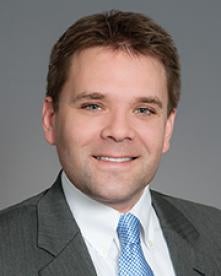Novartis AG v. Lee; Exelixis, Inc. v. Lee
Presented with a challenge to patent term adjustments as determined by the Patent and Trademark Office (PTO) under 35 U.S.C. § 154(b), the U.S. Court of Appeals for the Federal Circuit held that post-allowance delays are attributable to the PTO, and therefore, where there is a request for continued examination, the post-allowance period must be included in the patent term adjustment calculation. Novartis AG v. Lee, Case Nos. 13-1160, -1179 (Fed. Cir., Jan. 15, 2014) (Taranto, J.); Exelixis, Inc. v. Lee, Case No. 13-1175 (Fed. Cir. Jan., 15, 2014) (per curiam).
The 1994 statute changing the manner of calculating a patent’s effective term (from 17 years from the date of issuance to 20 years from the earliest claimed priority date) occasioned a need to account for Patent and Trademark Office (PTO) delays that effectively reduced a patent’s term. In 1999 Congress enacted 35 U.S.C. § 154(b)(1), guaranteeing patent applicants a pendency period of no more than three years and providing for a patent term adjustment (PTA) system to mitigate the effects of unreasonable delays in application processing times at the PTO.
Novartis challenged the PTO method of calculating PTAs associated with applicant-requested continued examination. Novartis’ argument focused on the statutory guarantee of no more than a three-year application pendency, and specifically the provision that the three-year pendency period does not include time consumed by continued examinations requested by the applicant. Novartis argued that once three calendar years from the application filing date have passed, further time spent in the PTO must be added to the patent term, even if it is time spent on a request for continued examination. Moreover, Novartis argued that the time consumed by a continued examination should be limited to the time before allowance, as long as no later examination occurred.
The PTO contended that time consumed by continued examination under § 154(b)(1)(B)(i), no matter when initiated, did not count towards the depletion of the three-year PTO examination time allotment. Further, the PTO argued that the time after allowance and until issuance was time consumed by continued examination, and therefore excluded from PTA credited to the patentee.
On the first point, the Federal Circuit agreed with the PTO, finding that the language of the statutory provision indicated that time spent in a continued examination does not deplete the PTO’s allotment of three years for application processing, no matter when the continued examination begins. Such a reading ensured that the applicants recovered for any delays due to a failure of the PTO to promptly process an application without allowing the applicant to recover time consumed by continued examination.
However, the Federal Circuit agreed with Novartis as to the issue of post- allowance PTO delays, concluding that time consumed by continued examination is limited to the time before allowance, as an “examination” under § 154(b)(1)(B) presumptively ends at allowance. Therefore, the Court reasoned that post-allowance delays are attributable to the PTO. The Court vacated the judgments as to PTA calculations for the patents in both Novartis and Exelixis, and remanded the cases for redetermination.
Practice Note: Novartis represents a slight modification to PTO calculations of patent term adjustments. Recently issued and soon-to-be issued patents that include a request for continued examination in their file history are likely due some additional PTA.



 i
i

